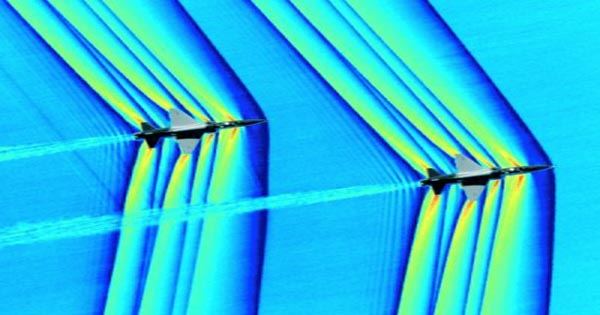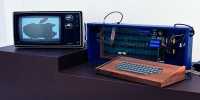NASA has released some incredible new images of supersonic shockwaves made from two jets flying side by side. This was made possible thanks to a brand new approach created by the agency to study supersonic flow in real situations and, these are the first air-to-air images of the event.
The photos were taken by NASA’s B-200 King Air, which flew 600 meters (2,000 feet) above supersonic jets. The subjects of the photos are two T-38 aircraft on supersonic flight, flying 10 meters (33 feet) away from each other.
J.T. Heineck, a physical scientist at NASA’s Ames Research Center, said in a statement, “We never thought it would be this clean, this would be beautiful.” “I am just happy with how these images were transformed. With this upgraded system, we have improved both the speed and quality of our images from previous research with the order of magnitude.”
The team used advanced camera systems with a wide field and enhanced memory, which allowed them to capture 1,400 frames per second. They have also improved the ability to download, meaning they have a greater ability to download more data to pass. NASA has previously used schlieren photography techniques to capture shockwaves, but images like this would not be possible without an upgrade.
“Just looking at the data for the first time, I think things have worked out better than we imagined. It’s a very big step.” Dan Banks, a senior research engineer at NASA Armstrong said, “We’re seeing a level of physical detail here that I don’t think anyone has ever seen before.”
The images are not only breathtaking; they are full of useful data. Researchers are going to use these to confirm the design of NASA’s X-99 Quiet supersonic technology X-Plane or X-99 QSST. This experimental vehicle will fly supersonic, but it will not produce higher sonic noise. Eliminating the sonic boom will allow the current restrictions on supersonic flying overland to be lifted.
Neil Smith, a research engineer at AerospaceComputing Inc. at NASA American’s Fluid Mechanics Laboratory said, “We’re looking at a supersonic stream, which is why we’re getting these shockwaves.”
“The funny thing is, if you look behind Tier 38, you see this push interacting in a curve. This is because the rear T-38 is flying in terms of the top aircraft, so the push is going to take a different shape. This data is really going to help us to understand how these shocks interact. ” NASA looks set to keep pace with the deadline for building a full-scale version of their quiet supersonic aircraft in a few years.















